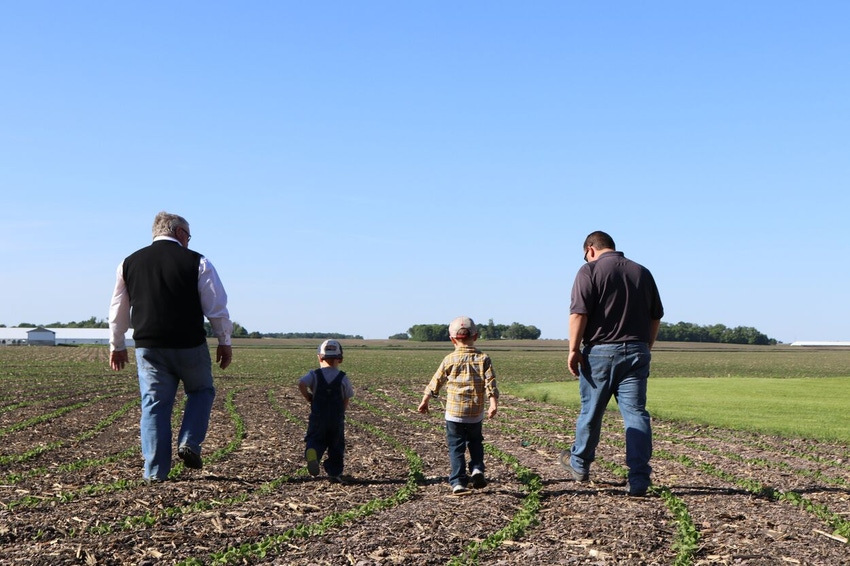U.S. pork producers set new sustainability goals, metrics
As of Feb. 1, more than 120 farms from 20-plus states, representing nearly 1.56 million pigs, are currently in the On-Farm Sustainability Reports program.

In 2018, the University of Arkansas released a study showing from 1960 to 2015 U.S. pork production improved by using 75% less land, 25% less water, 7% less energy and 8% fewer carbon emissions. With that 2015 baseline in mind, U.S. pork producers have set new sustainability goals in place, aiming to reduce greenhouse gas emissions by 40% by 2030.
"Yes, we've made fantastic progress in the U.S. swine industry, however, our pig farmers are not satisfied with that and want to continue moving forward," says Sara Crawford, vice president of sustainability for National Pork Board. "With that in mind, our pig farmers, a few years ago, started on a producer-led goal setting process. This multi-year process started with an assessment of key market and societal value drivers, looking at what our customers we're looking for … what we realized through this assessment is that our longstanding We Care Ethical Principles were the perfect bedrock on which to create the goals that you'll see in our industry sustainability report."
Released today by NPB, the first official U.S. Pork Industry Sustainability Report, details the industry's new goals and metrics, building on the established We Care commitments to animal well-being, environmental stewardship, people and employees, communities, public health and food safety.
Funded by Pork Checkoff dollars and in collaboration with the National Pork Producers Council, the goals set forth closely align with 15 of the 17 United Nations Sustainable Development Goals. However, Crawford notes U.S. pork's We Care Ethical Principles of animal wellbeing and public health exceed what the UN has put forward in their goals.
"Again, showing that dedication of our pig farmers to continuous improvement and taking care of our pigs, taking care of public health, and we're excited about that," Crawford says. "We knew that we've had these goals. We have the great work that our pork producers are doing on farm, but we want to put it into one place that everybody can see."
In addition to being in one place, the report outlines its producer-driven metrics approach, which quantifies progress through real, farm-level data. Each goal has specific reporting metrics and mechanisms in place to help individual farms – and in turn, the entire industry – measure and report progress.
A key component to the industry's established metrics infrastructure is On-Farm Sustainability reports, provided by NPB in partnership with third-party partner SEC EcoPractices. The reports are available for free to any pig farmer who pays into the Pork Checkoff. The reports gather data from farmers through a one-on-one process that takes into account the unique situation on each operation. The reports also help each farm establish a farm-specific baseline and make informed continuous improvement planning.
The industry is focused on doubling the number of farms participating in the reports in the next 12 months.
Minnesota pork producer Dale Stevermer was a participant in the goals and metrics development.
"It comes to the producer, this is their data, so they are able to utilize it where they need to, whether it is to a lender, landowners," says Stevermer. "It is nice to be able to share with various family members, and one of the things that this really does is validates the manure cycle that pig farmers have been very used to using."
On the next level, the data is aggregated, removing individual farm information, while gleaning a cumulative report of the industry progress that can be shared at the local, state and national level.
"We need benchmarks to better track and monitor progress, and also to make better data-driven decisions for the future of pork production," says Stevermer. "The On-Farm Sustainability Reports provide metrics that can be aggregated to track progress at the industry level, while also giving farmers individualized data that helps them make better decisions for the future of pork production."
As of Feb. 1, more than 120 farms from 20-plus states, representing nearly 1.56 million pigs, are currently in the program and providing on-farm data across environmental, social and economic sustainability indicators. The data thus far shows those participating pig farms have offset 4,208 tons of commercial nitrogen, phosphorus and potassium required to produce feed on their farms.
"The producers involved in this effort wanted the industry's goals to align with sustainability efforts globally while also making sure the approaches to accomplish them were as diverse as the 60,000-plus farms in our industry. As a result, these goals are truly measurable and also meaningful on a global and local scale," says Crawford.
About the Author(s)
You May Also Like




